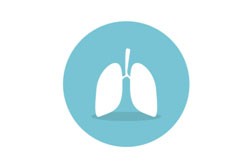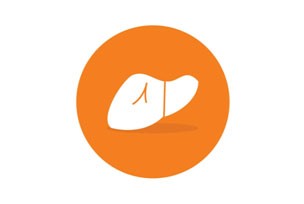By Jenn Sinrich
Graphics by ISTOCK/JUMPE
Detecting hard-to-find cancers could make all the difference when it comes to treatment. Certain cancers are easier to spot than others, and according to experts, the following cancers are the trickiest to detect early.
PANCREATIC CANCER

About seven percent of all cancer deaths are due to pancreatic cancer, according to the American Cancer Society. So it’s safe to say cancer screening strategies are needed. “The hopeful news is that there are new technologies emerging, such as molecular blood tests and other novel approaches, that could expand early detection efforts to these historically unscreened tumor types,” says David A. Ahlquist, MD, gastroenterologist and professor of medicine at the Mayo Clinic College of Medicine.
The reason pancreatic cancer is so difficult to detect is because it’s internal, initially painless, and not generally connected to anything that would lead to symptoms. “The exception is if it happens to occur close to the bile duct, which leads to blockage and jaundice relatively early in the course of the disease,” explains Mark Faries, MD, surgical oncologist and director of the Donald L. Morton, MD, Melanoma Research Program and director of therapeutic immunology at the John Wayne Cancer Institute at Providence Saint John’s Health Center in Santa Monica, California. “Treatment in a fortunate minority is a very large operation, and in those whose cancer is detected later, treatment is largely based on chemotherapy and is temporarily relieving at most.”
KIDNEY CANCER

Kidney cancer can be hard to detect because patients aren’t usually tested unless they show the symptoms, which often include lower back pain, chronic fatigue, unexplained weight loss, and blood in the urine. “Because the kidneys are so deep inside the body, small kidney tumors cannot be seen or felt during an annual physical exam,” explains Chris Fikry, MD, vice president of oncology at Quest Diagnostics. “Additionally, there are no recommended screening tests for kidney cancer in people who are not at increased risk.” Patients who have certain inherited conditions that trigger tumor and cancer growths, such as Von Hippel-Lindau syndrome, hereditary papillary renal cell carcinoma, and Birt-Hogg-Dubé syndrome have a higher risk of kidney cancer. Doctors may choose to recommend that these patients get regular imaging tests such as computerized tomography (CT) scan or magnetic resonance imaging (MRI) to look for kidney tumors.
NON-SMALL CELL LUNG CANCER

Three-quarters of lung cancers are diagnosed after they’ve already spread. And often patients do not become symptomatic until cancer has already grown to a size that causes lung cancer symptoms such as cough, pneumonia, shortness of breath, and has already made its way through the bloodstream and lymph system. Non-small cell lung cancer (NSCL) is the most common type of lung cancer, yet it’s difficult to detect early on because early-stage lung cancer often has no symptoms and is not detected with a chest X-ray. “Positron emission tomography (PET) and CT scans can be helpful in diagnosing lung cancer. A doctor may also take cancer cells from lung secretions, fluid around the lungs, or through a biopsy for a confirmatory diagnosis, which typically happens in a later stage,” says Dr. Fikry. NSCL has very low survival rates if diagnosed in a late state, so people with a long history of smoking may want to talk to their doctor about the possible value of CT screening to aid the detection of lung cancer in an early, more treatable stage.
OVARIAN CANCER

While ovarian cancer only accounts for about 3 percent of cancers among women, it’s the fifth-deadliest cancer, accounting for more deaths than any other cancer of the female reproductive system. According to cancer.org, an estimated 21,750 women will receive a new diagnosis of ovarian cancer this year alone, and approximately 13,940 of those women will die from it. Like other cancers, the earlier the diagnosis, the better the outcome, but only about 20 percent of ovarian cancers are found at an early stage.”This is mainly because of the size and distensibility of the abdominal cavity and the fact that there are no symptoms from small, early-stage ovarian cancer,” says Joe O’Connell, MD, vice president of oncology and hematology at inVentiv Health. “It’s most often diagnosed at stages three or four.”
SARCOMA

These tumors of body tissues, such as fat, muscle, deep skin tissues, bone, or cartilage, do not produce early symptoms. While it’s an extremely rare form of cancer to have in adulthood, with only about 1 percent of all adult cancer being sarcoma, it’s much more common in children, compensating for about 15 to 20 percent of all children’s cancers. “Because they’re not connected to the surface in most cases, sarcoma tumors can get quite large before they become symptomatic,” explains Dr. Faries. “They also don’t produce blood markers that can be detected and are generally uncommon with no high-risk populations, making them not ideal for screening.” A biopsy is the only diagnostic tool and treatment generally consists of surgery if possible, as most of the currently available systemic therapies are not very effective.
BRAIN CANCER

Cancers of the brain and spinal cord tumors are often found because of signs and symptoms the person may be having, however, these are often experienced at later stages. “If a tumor were to arise in the motor cortex, for example, (the area of the brain involved in controlling voluntary movement), it would cause a noticeable deficit such as weakness in the arm or leg,” explains David Poulad, MD, board-certified neurosurgeon in Union, New Jersey. “However, these tumors may often arise in neighboring areas where they would cause somewhat vague symptoms to a patient such as clumsiness of the hand in performing fine motor tasks, as opposed to frank weakness or subtle difficulties with speech.”
Patients may also exhibit very subtle changes in personality that may only be noticed by their closest family members. Another big roadblock in the way of detection is that one of the most common brain tumor symptoms is headache, which is so common that it’s often ignored by patients and even some primary care physicians. To date, there’s no cancer screening available for brain cancer, short of an imaging study of the brain such as an MRI or a CT scan, and the prognosis is very poor. “Without no cure currently available, the goal of a neuro-oncology team is to preserve neurological functioning for as long as possible and manage the growth of the cancer,” says Dr. Poulad.
LIVER CANCER

Because no symptoms are present until later stages, liver cancer is another hard-to-detect cancer. “If the tumor is small, it’s especially hard to detect on a physical exam because most of the organ is covered by the right rib cage,” explains Dr. Fikry. “By the time the liver is large, the tumors has likely spread throughout the organ, beyond the point of being totally removed surgically, but leaving enough healthy liver intact.” While there are no widely recommended cancer screening tests for liver cancer in those not at risk, your doctor may recommend testing if you have a family history of the disease or have been previously diagnosed with the human papillomavirus (HPV). Many patients who are alcoholics develop liver cancer after long-standing cirrhosis, or liver disease.
Jenn Sinrich is an experienced digital and social editor in New York City. She’s written for several publications including SELF, Women’s Health, Fitness, Parents, American Baby, Ladies’ Home Journal, and more. She covers topics from health, fitness, and food to pregnancy and parenting. In addition to writing, Jenn volunteers with Ed2010, serving as the deputy director to Ed’s Buddy System, a program that pairs recent graduates with young editors to give them a guide to the publishing industry and to navigating New York. When she’s not busy writing, editing, or reading, she’s enjoying and discovering the city she’s always dreamed of living in with her fiancé, Dan, and two feline friends, Janis and Jimi/https://www.thehealthy.com.
Sources
American Cancer Society: “Key Statistics for Pancreatic Cancer”
David A. Ahlquist, MD, gastroenterologist and professor of medicine at the Mayo Clinic College of Medicine
Mark Faries, MD, surgical oncologist and director of the Donald L. Morton, MD, Melanoma Research Program and director of therapeutic immunology at the John Wayne Cancer Institute at Providence Saint John’s Health Center in Santa Monica, California
Chris Fikry, MD, vice president of oncology at Quest Diagnostics
Joe O’Connell, MD, vice president of oncology and hematology at inVentiv Health
David Poulad, MD, board certified neurosurgeon in Union, New Jersey
American Cancer Society: “Key Statistics for Ovarian Cancer”























